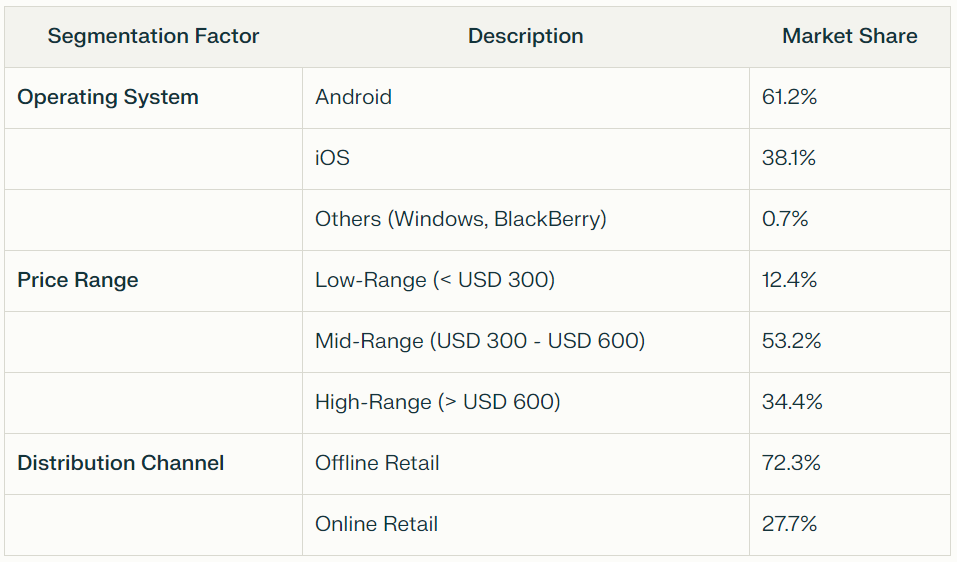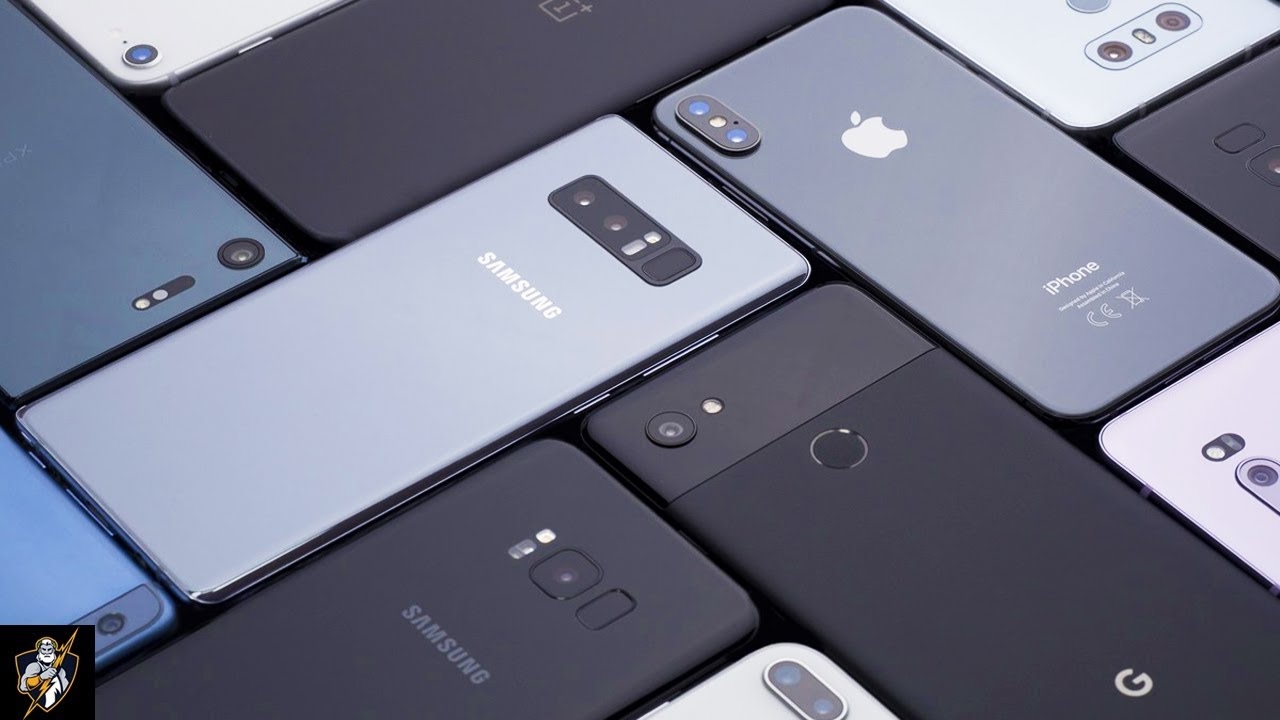The USA smartphones market has witnessed significant growth in recent years, driven by technological advancements, changing consumer preferences, and increasing internet penetration. The current market size is estimated to be around USD 74.7 billion in 2023, and it is expected to continue growing in the coming years.
The growth of the USA smartphones market can be attributed to several factors, including the introduction of new technologies, such as 5G networks and AI-powered features, the widespread availability of high-speed internet, and the increasing use of smartphones for a wide range of tasks, from online shopping to mobile banking.
USA Smartphones Market Segmentation
The USA smartphones market can be segmented based on various factors, including operating system, price range, and distribution channel. Let's take a closer look at each of these segments:

Operating System Segmentation
- Android: The Android operating system dominates the USA smartphones market, with a market share of 61.2% as of March 2024. Android-powered devices are known for their versatility, customization options, and affordability, making them a popular choice among a wide range of consumers.
- iOS: Apple's iOS operating system holds the second-largest market share in the USA, at 38.1%. The iPhone, Apple's flagship smartphone, is renowned for its premium design, seamless user experience, and strong brand loyalty among consumers.
- Others: Other operating systems, such as Windows and BlackBerry, have a relatively small presence in the USA smartphones market, accounting for only 0.7% of the market share.
Price Range Segmentation
- Low-Range: Smartphones in the low-range price segment, typically priced under USD 300, account for 12.4% of the USA market. These devices cater to budget-conscious consumers and often offer basic features and functionalities.
- Mid-Range: The mid-range price segment, with smartphones priced between USD 300 and USD 600, holds the largest market share in the USA at 53.2%. These devices strike a balance between affordability and advanced features, appealing to a broad range of consumers.
- High-Range: The high-range price segment, with smartphones priced above USD 600, accounts for 34.4% of the USA market. These premium devices, such as the iPhone and high-end Android smartphones, offer the latest technologies, cutting-edge features, and a premium user experience.
Distribution Channel Segmentation
- Offline Retail: Traditional brick-and-mortar stores, including carrier stores, electronics retailers, and authorized resellers, account for 72.3% of smartphone sales in the USA. Consumers often prefer the in-person experience and the ability to physically inspect the devices before making a purchase.
- Online Retail: E-commerce platforms, including manufacturer websites, online marketplaces, and dedicated smartphone retailers, account for 27.7% of smartphone sales in the USA. The convenience and accessibility of online shopping, coupled with competitive pricing and a wider selection of devices, have driven the growth of this distribution channel.
Conclusion
The USA smartphones market is a dynamic and multifaceted landscape, with various segments catering to the diverse needs and preferences of consumers. The market is dominated by the Android operating system, which offers a wide range of devices at different price points, appealing to a broad customer base.
The mid-range price segment holds the largest market share, as it provides a balance between affordability and advanced features, making it a popular choice among many consumers. The high-range segment, on the other hand, caters to those who are willing to pay a premium for the latest technologies and a premium user experience.The distribution of smartphones in the USA is still primarily through offline retail channels, as consumers value the in-person experience and the ability to physically inspect the devices. However, the growing popularity of online shopping has also led to a significant share of sales through e-commerce platforms, offering consumers greater convenience and a wider selection of devices.
As the USA smartphones market continues to evolve, understanding the nuances of these segmentation factors will be crucial for manufacturers, retailers, and marketers to develop targeted strategies and effectively cater to the diverse needs of consumers. By staying attuned to the changing market dynamics and consumer preferences, businesses can position themselves for success in the highly competitive USA smartphones market.



